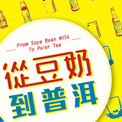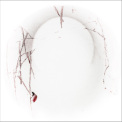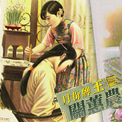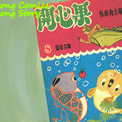-
History & Society
- Education in Pre-war Hong Kong
- History of Taikoo Sugar Refinery
- Hong Kong Products Exhibition
- Local Festivals Around the Year
- Post-war Industries
- Pre-war Industry
- The Hong Kong Jockey Club Archives
- Tin Hau Festival
- Memories We Share: Hong Kong in the 1960s and 1970s
- History in Miniature: The 150th Anniversary of Stamp Issuance in Hong Kong
- A Partnership with the People: KAAA and Post-war Agricultural Hong Kong
- The Oral Legacies (I) - Intangible Cultural Heritage of Hong Kong
- Hong Kong Currency
- Hong Kong, Benevolent City: Tung Wah and the Growth of Chinese Communities
- The Oral Legacies Series II: the Representative List of the Intangible Cultural Heritage of Hong Kong
- Braving the Storm: Hong Kong under Japanese Occupation
- A Century of Fashion: Hong Kong Cheongsam Story
Geography & EnvironmentArt & Culture- Calendar Posters of Kwan Wai-nung
- Festival of Hong Kong
- Ho Sau: Poetic Photography of Daily Life
- Hong Kong Cemetery
- Sketches by Kong Kai-ming
- The Culture of Bamboo Scaffolding
- The Legend of Silk and Wood: A Hong Kong Qin Story
- Journeys of Leung Ping Kwan
- From Soya Bean Milk To Pu'er Tea
- Applauding Hong Kong Pop Legend: Roman Tam
- 他 FASHION 傳奇 EDDIE LAU 她 IMAGE 百變 劉培基
- A Eulogy of Hong Kong Landscape in Painting: The Art of Huang Bore
- Imprint of the Heart: Artistic Journey of Huang Xinbo
- Porcelain and Painting
- A Voice for the Ages, a Master of his Art – A Tribute to Lam Kar Sing
- Memories of Renowned Lyricist: Richard Lam Chun Keung's Manuscripts
- Seal Carving in Lingnan
- Literary Giant - Jin Yong and Louis Cha
-
History & SocietyGeography & EnvironmentArt & Culture
-
View Oral History RecordsFeatured StoriesAbout Hong Kong Voices
-
Hong Kong MemorySeal Carving in LingnanRecently Visited
Hong Kong as a Key Location in the Development of Lingnan Sigillography
The history of the Hong Kong seal community began in 1872. Xu Sangeng (1826–1890), a seal carver of the late Qing dynasty, visited Hong Kong from Shanghai at the invitation of his associate Wang Tao (1828–1897). Xu carved the seal “Taoyuan cang” (1872) and this is by far the earliest evidence of Chinese seals in Hong Kong. In 1909, Qi Baishi (1864–1957) stopped over in Hong Kong. According to the records in his Jiyuan riji (Diary of Jiyuan), his friend implored Qi to carve for him.
Despite a history originating from the late Qing dynasty, the study of Hong Kong seal carving is still considered to be in its infancy because the study of Chinese sigillography did not begin until relatively late, especially in relation to comparable Chinese art forms such as Chinese calligraphy and paintings. There was a widespread lack of textual records and a very weak emphasis on preservation, as such, the study of this art form has yet to mature. Because the art of calligraphy and seals share the same origin and often complement each other, the two art forms have always been discussed side by side. Comparatively, seals have been more often overlooked than calligraphy and very few researchers have focused their studies on them. The situation is particularly evident in Hong Kong, where there is still a large amount of knowledge to be acquired. However, when considering the historic progress of sigillography in Hong Kong, there are two important stages that must be discussed:
(I) Crucial Period of Development (circa 1940s and 1950s)
During the 1940s and 1950s, the talents and artefacts of the Guangdong region became more prevalent in the city. Hong Kong, as a result, became an important place where documentations and artefacts were preserved and Lingnan sigillography grew. The first example of a seal society emerged in Hong Kong in 1949. This is the year He Xiaokuan (1916–1969) founded “Yiyi Seal Society (Yiyi Yinshe)” on Tung Man Street in Central. Initially, private seals and business seals were carved for clients and later it became an agent for calligraphers and seal carvers, holding exhibitions and conducting sales of materials and tools.
During and before this period, there were many cultural gatherings, exchange sessions and exhibitions held by local calligraphy and painting groups. Amongst various events organised, some involved seal carvers who exchanged their insights about seal art. However, records of “seal societies”, i.e. groups with the objective to bring seal enthusiasts together and enrich the art form of seal carving, were yet to be verified. Following “Yiyi Seal Society”, Feng Kanghou (1901–1983) founded “Nantian Seal Society (Nantian Yinshe)” (1962), and Zhao Heqin (1894–1971) founded “Society for the Three Arts of Calligraphy, Painting and Carving (Shuhuake Sanyi Xueshe)” (1969), both of which were quite important in the field of seal carving.
He Xiaokuan, Feng Kanghou, Luo Shuzhong (1898–1969) organised “Sheng Gang Ao zhuanke jia zuopin diyici lianhe zhanlan (The first joint exhibition of the works of seal carvers from Guangdong, Hong Kong and Macau)” in the summer of 1958. Held on the second floor of Man Yee Building, more than 30 seal carvers participated in the exhibition and the catalogue Xiandai zhuanke heji (Collection of seal carving of the present time) (1958) was published. It listed close to 220 seal images by 20 seal carvers. Because the majority of seal carvers were active in Hong Kong, this exhibition clearly demonstrates that Hong Kong played a key role in the exchange of knowledge and development of Lingnan seal carving.
It is also notable that one of the exhibition participants, Yi Yueshi (1912–2007), who was a renowned local epigrapher, carved the seal “Li Zuyou yin” (1958) for another exhibition participant Li Tsoo-yiu (1897–1965) as a symbol of friendship and shared appreciation of the art form. The side inscription even recorded the pre-exhibition preparation meeting, which involved some 20 seal carvers of different generations. This side inscription read: “Mr. Tsoo-yiu is highly attained in epigraphy, calligraphy and painting; he is also skilled in seal carving. At home and abroad, he is the one and only practitioner of western medicine with this level of artistic attainment…”
This seal of Li Tsoo-yiu, alongside more than fifty other seals that were used by him before his passing, is now a part of the collection of the Flagstaff House Museum of Tea Ware. They are now considered important artefacts for the museum. In addition to Yi Yueshi, the seals were also carved by Lin Qianshi (1918–1990), Feng Kanghou, He Shaoqiang (1917–?), Gao Tianxin (1915–?), Jian Jinglun (1888–1950), Zhang Chiliang (dates of birth and death unknown), He Xiaokuan, Tao Shoubo (1902–1997), Zhang Xiangning (1909–1960), Xu Banyu (1914–1968), Luo Shuzhong, and Fang Quji (1922–2001); most of whom were Hong Kong or Guangdong seal carvers. Although Li Tsoo-yiu was not famed for his art, he was very enthusiastic about Chinese calligraphy and painting, as well as seal carving, and had frequent encounters with members of the Hong Kong art community. He also acquired a rich collection of epigraphy pieces and books. Fung Ping Shan Library of The University of Hong Kong acquired his book collection, which totalled 3,218, in 1967. Amongst them, 219 titles were books containing collections of seal imprints, and these made a significant contribution to the conservation of documentation, in addition to promoting the development of sigillography.
(II) The Zenith (circa 1970s and 1980s)
The cornerstone in the development of the Hong Kong seal community was laid in the 1940s and 1950s and this development continued until the 1970s. Because of the cumulative achievements of their predecessors, the new generation of seal carvers became more and more active and forthright in taking part in exchanges and in promoting the art of seals, up until the founding of “Hong Kong You Sheng Seal Society (Xianggang Yousheng Yinshe)”, which brought the development of Hong Kong seal carving to its summit. Journal of Hong Kong Seal Carving (1989), edited by “Hong Kong You Sheng Seal Society”, gave a detailed account of the founding of the “You Sheng” society and its events. Undoubtedly, “You Sheng” can be described as the most formative and largest epigraphy and seal carving society, which was involved with the largest amount of seal carvers in the history of Hong Kong. The extensive scope of its activities became an important hub to promote and to pass on the legacy of Lingnan seal carving during the 1970s and 1980s.
At the same time, the summit of development for the Hong Kong seal community was also demonstrated through the abundance of publications that examined the reference collections of seals and sigillography. During the late 1970s to early 1980s, epigraphy research specialists Ma Guoquan (1931–2002) and Wang Renchong (1935–?) moved to Hong Kong and became active players in the city’s seal community. Their writings were wide-ranging, covering the brief history of seal carving, study on ancient seals, various schools of seal carving of the Ming and Qing dynasties, Guangdong sigillography, as well as biographical sketches of contemporary seal carvers. Up till now, these prolific writings still serve as important references in the study of sigillography, both at home and abroad.
Photos
Copyright © 2012 Hong Kong Memory. All rights reserved.












